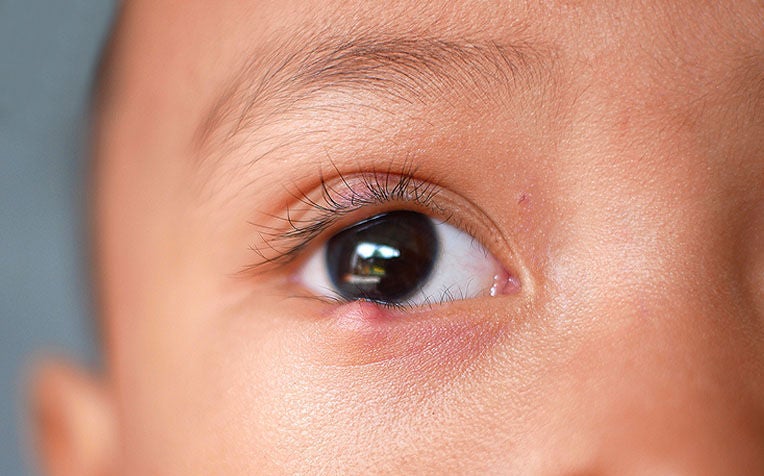
Stye and chalazion appear similar but can be caused by different reasons.
A stye and a chalazion are both lumps that occur in or along the edge of your eyelid. Here are some home remedies you can try to relieve the pain and discomfort.
6 Home remedies for stye and chalazion
1. Use a warm compress
A common home remedy for stye or chalazion is the use of a warm compress. Simply soak a cotton pad in warm water and apply it over your eyelid for 10 – 15 minutes. Repeat this for another 3 – 5 times during the day. This will help to soften the hardened oil that is blocking the gland ducts, allowing it to drain.
2. Gently massage your eye
Gentle massaging of the eyelid for several minutes each day may help to promote drainage. Ensure your fingers are clean before doing this to avoid infection.
3. Perform an eyelid scrub
Here's how to: Dilute a few drops of baby shampoo with warm water and use a cotton bud to clean away any crusts that are present on the eyelids, particularly around the roots of the lashes, while keeping your eyes closed.
4. Temporarily stop using eye makeup and contact lenses
Do not put on eye make-up or contact lenses to prevent further discomfort or irritation. Contact lenses or eye make-up can be easily contaminated with the bacteria from the stye.
5. If your eye doesn't get better, see an eye doctor
"If the stye or chalazion doesn’t recede within a month despite trying these home remedies, you should consult an eye specialist for further treatment," advises Dr Valencia Foo, Associate Consultant from the Cataract & Comprehensive Ophthalmology Department at Singapore National Eye Centre (SNEC), a member of the SingHealth group.
Your eye specialist may recommend the following options, depending on the severity of your condition.
- Antibiotics
You may be prescribed with a course of antibiotics, antibiotic ointment or antibiotic eye drops to reduce the chronic inflammation on the eyelid.
- Incision and drainage
If the stye or chalazion doesn’t clear up and your vision is affected, your doctor may recommend a minor surgical procedure to remove the pus.
This involves numbing your eyelid and making a small incision in the bump to drain out the fluid. It is performed as a day surgery and takes approximately 15 to 20 minutes.
If the chalazion keeps recurring, your doctor may take a biopsy of the lump to check for potential underlying causes.
** You should not attempt to pop a stye or chalazion as it will cause your eyelids to be more inflamed and swollen, and you may also inadvertently injure your eye since it is close to the eye itself.
How to prevent stye and chalazion from recurring
The best way to prevent a stye or chalazion from recurring is to observe and maintain good eye hygiene. These include:
Do not rub your eyes if you have allergies
Wash your hands with soap and water before touching your face and eyes
Remove dirt and makeup before going to bed
Avoid using old makeup and replace mascara and eye shadow every 3 months to prevent bacterial growth. Do not share it with anyone else
Disinfect and clean your lenses thoroughly with a lens cleaning solution and wash your hands before putting on your contact lenses
If you get recurring episodes of stye or chalazion, clean your eyelids regularly using an eyelid scrub or mix a little bit of baby shampoo with warm water
If the stye or chalazion does not go away, you should seek help from an eye specialist.
Stye vs chalazion: How to tell the difference
Many may find it difficult to distinguish between these two due to similarity in appearances. Here are some ways to tell the difference.
| | Stye | Chalazion |
|---|---|---|
| What is it? | An eye stye or hordeolum is a small pimple-like bump that develops from the root of an eyelash or under the eyelid. It is usually caused by a bacteria infection. | A chalazion is a small bump or cyst that slowly forms on your eyelid when an oil gland is blocked. |
| What are its symptoms? |
|
|
| What causes it? | Often caused by poor eye hygiene habits such as:
| Often occur in people with the following underlying conditions:
|
Ref: G25
More eye articles you may be intertested in:
8 Easy Ways to Prevent Eye Strain
Cataract: Causes, Symptoms and Treatment
Glaucoma: Beware of the Silent Thief of Sight
AMD (Age-Related Macular Degeneration): What You Need to Know
















 Get it on Google Play
Get it on Google Play